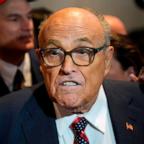Legacy of the Frank E. Campbell Funeral Chapel
A profile of the chapel that provides final farewells for the rich and famous.
Jan. 25, 2008— -- After actor Heath Ledger's untimely death shocked the nation, his body was taken to the Frank E. Campbell funeral chapel, which has a long history of protecting the privacy of the rich and famous and their loved ones.
In 2001, the New York City funeral home agreed to open its extensive archives to "20/20" for a rare look at how this chapel played a major role in the canonization of celebrities.
Gene Schultz, now retired, was president of the Frank E. Campbell funeral chapel, which, over the last century, has arranged funerals for such luminaries as Jacqueline Kennedy Onassis; actors James Cagney, Greta Garbo, and Joan Crawford; composers Irving Berlin, George Gershwin, Igor Stravinsky and John Lennon; wild west legend Bat Masterson; mobster Frank Costello; muppeteer Jim Henson; business tycoons Malcolm Forbes and William Randolph Hearst; impresario Ed Sullivan; singer Judy Garland and murdered rap artist Biggie Smalls.
Smalls' 1997 funeral typified the security concerns that have often made police such a visible component here. His funeral ended with a peaceful procession of limousines back to his Brooklyn neighborhood.
"In the past, we have had the news media coming into our facility, checking to find out if there's any information given out, for someone who has passed away that is high profile. We turn them away immediately," Schultz said.
Frank Campbell first drew international attention in August 1926, when Rudolph Valentino, a romantic idol, who was one of the biggest stars in the movies at the time, died of a ruptured ulcer at the age of 31.
"The crowds of people that gathered at the funeral home were immense ... to the point where the police became overwhelmed, creating an atmosphere of ... probably of something that had never existed before in funeral service," Schultz said.
In fact, Campbell, himself, had paid some of the mourners to add to this massive outpouring of grief. Even before that landmark day, the rest of the funeral industry had begun to take notice of, and learn from, Campbell. He's credited with originating the ideas of adding chapels that handle services for all faiths, and of buying obituary notices in the newspapers.




